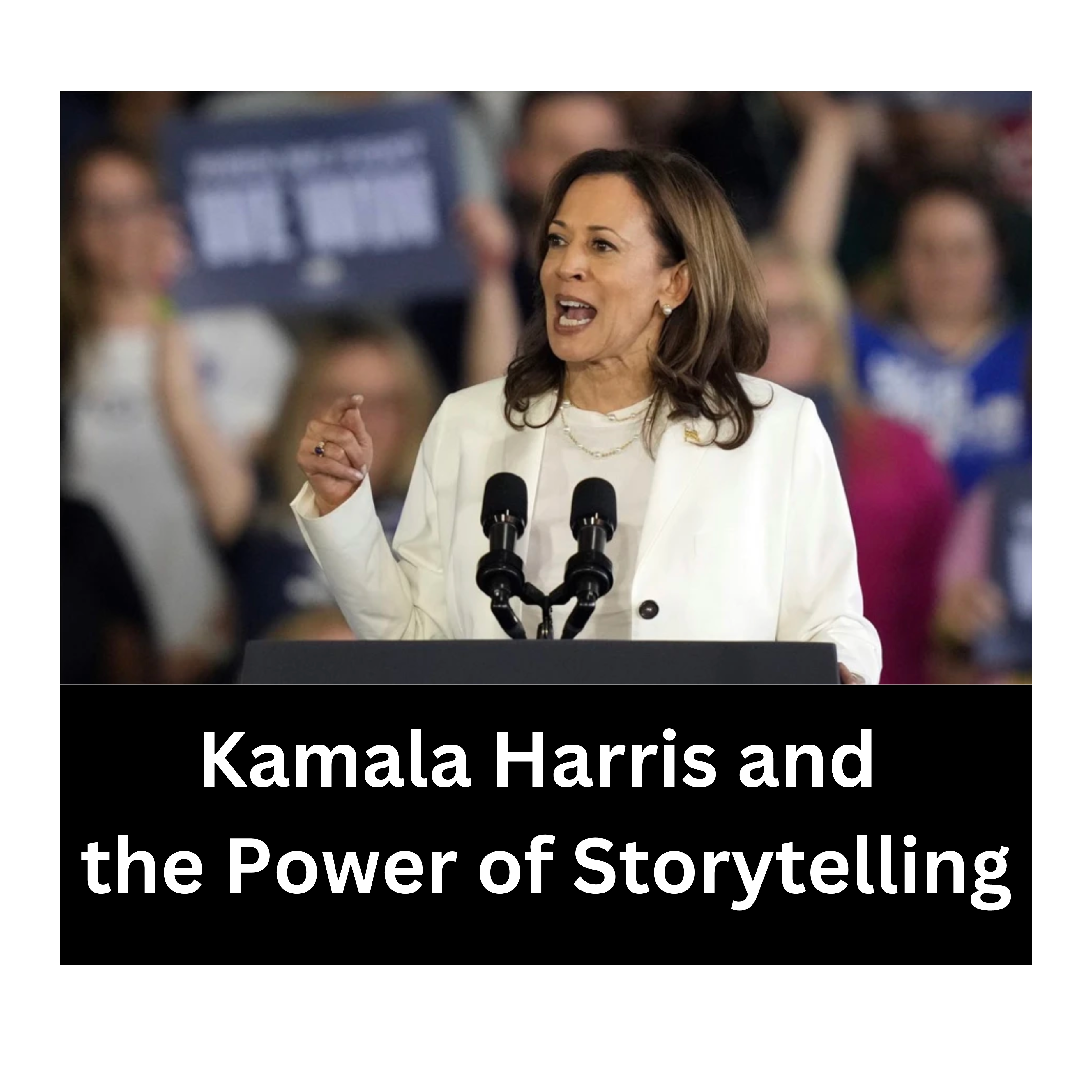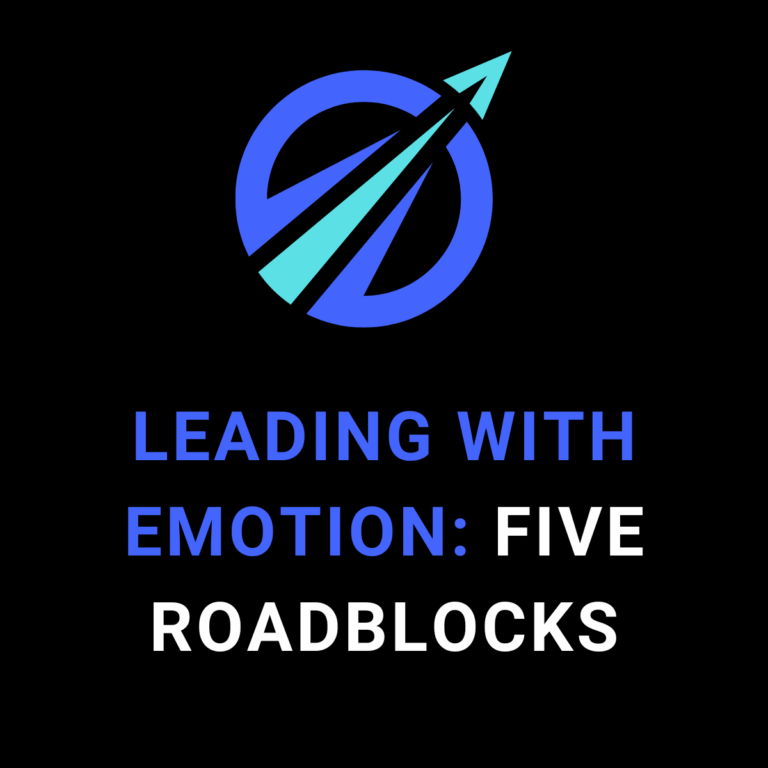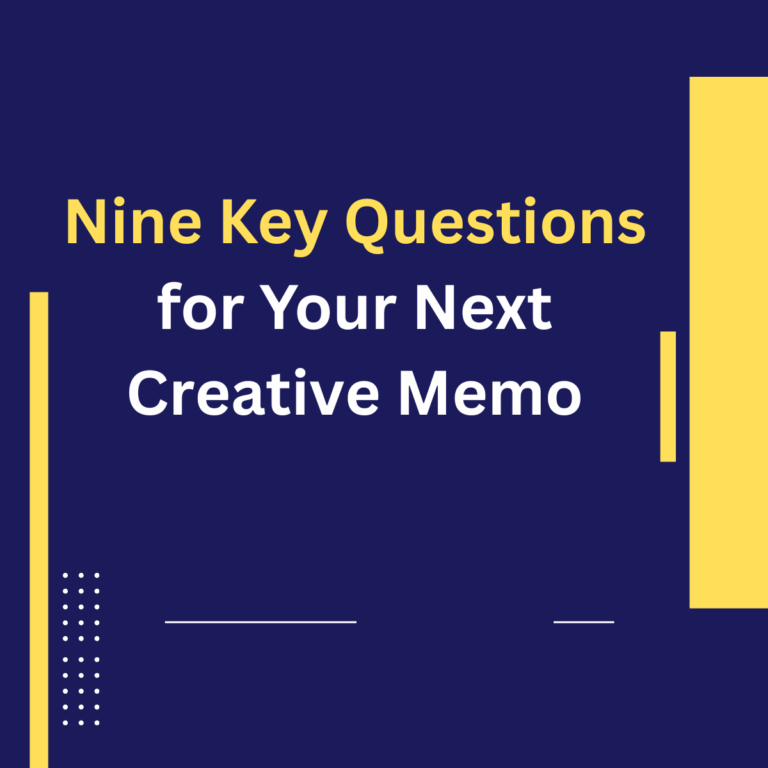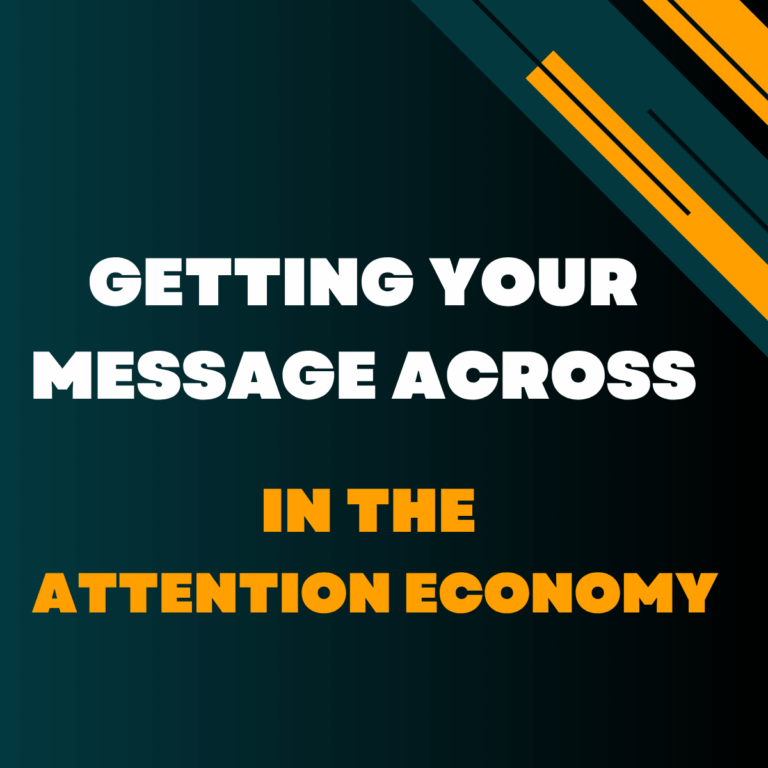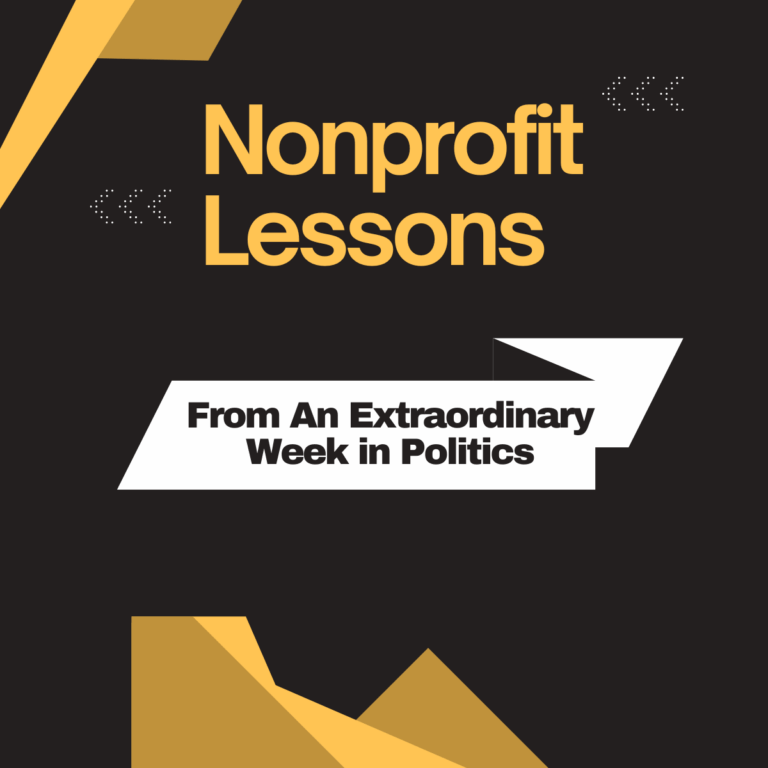OVERVIEW
Today’s post returns to a topic discussed in one of my first OBrien On Message posts. We all know how powerful and persuasive storytelling can be in nonprofit communications. But, as Maddie Nance and I discussed on last week’s Storytelling Do’s and Don’ts on LinkedIn Live, not all stories are created equal.
If we want the stories we tell to be emotionally engaging and strategically effective, we have to be intentional about what stories we choose to tell and how we convey them.
This post opens with an example of truly powerful storytelling from none other than Kamala Harris. Then, using that and other examples, we discuss Ten Guidelines to Persuasive and Purposeful Storytelling.

In her short, but fast-paced campaign, Kamala Harris is proving herself to be a powerful communicator. One clear example is her emotional telling of how the Trump abortion ban in Georgia led to the tragic and preventable death of Amber Nicole Thurman.
Here is a slightly abridged version from a speech Harris delivered in Georgia:
“One in three women in America lives in a state with a Trump abortion ban. And now we know two women – and those are only the stories we know – two women here in the state of Georgia died because of the Trump abortion ban.
“We heard her story last night. A vibrant 28-year-old young woman. She was ambitious. You know, I talked to her mother and sisters about her. And they describe such an extraordinary life of a person. She was excited. She was working hard. She was a medical assistant, still going to nursing school, raising her six-year-old son.
“She was really proud that she had worked so hard that she gained some independence. Her family was telling me that she was able to get an apartment in a gated community with a pool for her son to play in.
“She was so proud and she was headed for nursing school. Her name and we will speak her name – Amber Nicole Thurman. And she had her future all planned out. And it was her plan. You know, let’s just pause on that for a moment. Her plan. What she wanted to do – for herself, for her son, for their future.
“And so when she discovered that she was pregnant, she decided she wanted to have an abortion. But because of the Trump abortion ban here in Georgia, she was forced to travel out of state to receive the health care that she needed. But when she returned to Georgia, she needed additional care. So, she went to a hospital. But you see under the Trump abortion ban, her doctors could have faced up to a decade in prison for providing Amber the care she needed.
“Understand what a law like this means. Doctors have to wait until the patient is at death’s door before they take action. You know, on the other side, the other folks, Trump and his running mate. They’ll talk about “Oh but I do believe in the exception to save the mother’s life.” Okay let’s break that down, shall we? Let’s break that down.
“So, we’re saying that we’re going to create public policy that says that a doctor, a health care provider, will only kick in to give the care somebody needs if they’re about to die. Think about what we are saying right now. We’re saying that good policy, logical policy, moral policy, humane policy is about saying that a medical provider will only start providing that care when you’re about to die.
“And so Amber waited. Twenty hours. Twenty hours. Excruciating hours until finally she was in enough physical distress that her doctors thought they would be okay to treat her. But it was too late. She died of sepsis and her last words to her mother – which her mother, you know, tears up and cries every time she speaks it. Her last words to her mother: “Promise me you’ll take care of my son.”
There is so much wisdom about persuasive storytelling in how Kamala Harris delivers this tragic story. Let’s look at some of the principles at work in this and other compelling storytelling examples.

It’s important to understand how nonprofit storytellers can apply behavioral science principles as we work to create emotionally engaging and persuasive stories. The observations below draw on my own experience as well as the wonderful work of story coach Lisa Cron. She is the author of Wired for Story, perhaps the best book ever written about persuasive storytelling.

There is much wisdom in the words of Maya Angelou: “People will forget what you said. They will forget what you did. But they will never forget how you made them feel.”
Leading with emotion and backing it up with facts works. Leading with facts and figures and trying to add emotion in later doesn’t. And there’s no better way to convey emotion than by telling a story. As the title of Lisa Cron’s book suggests, we humans are wired for story.
Nancy Harhut, author of Using Behavioral Science in Marketing puts it this way: “Stories are not only engaging and involving, they are processed in the brain differently than facts and figures are . . . stories stoke emotion. And emotion drives decisions.”
If Kamala Harris had restricted her speech to the recitation of facts about the reach and impact of abortion bans put in place after Roe v. Wade was overturned, it wouldn’t have been nearly as powerful as telling Amber Thurman’s heartbreaking story.

Evoking emotions doesn’t do much good unless you are evoking the right emotions. What do I mean by “right”? I’m referring to emotions that match both the moment and the voice of your organization.
Here’s a good example from my work with a longtime client. The ACLU played a vital role in exposing the brutal policy of intentionally separating children from their families at our country’s southern border. The stories around that crisis were heartbreaking and the ACLU definitely conveyed the agony of parents not knowing where their children were or if they would ever see them again.
But, if we stopped there, it would have been a mistake. As I like to say, the last thing the world needs is a warm and fuzzy ACLU. So, ACLU messaging around family separation leaned heavily into outrage and determination to stop the separations from happening. Putting the strongest beat on outrage matched peoples’ sense of the ACLU as a tough-minded, unyielding advocate for peoples’ rights.

Too often, organizations tell interesting stories that powerfully illustrate the problem they are working on. But they fail to take the next step extending the story into details about how the group (and, by extension, the donor) is helping advance a solution. Without that link the story does little to deepen personal engagement with your cause.
A story can be fascinating without being purposeful. A nonprofit story has to be interesting and emotionally engaging in its own right. But it must also reinforce and deepen the reader’s understanding of the group’s core narrative.
In relaying Amber Nicole Thurman’s story, Kamala Harris directly connects her entirely preventable death to a sequence of political events – Donald Trump’s reshaping of the Supreme Courts, the Court’s overturning of Roe v. Wade, and the Georgia abortion ban the Court’s decision made possible.
We aren’t just hearing a sad story. We’re hearing one that reflects the purpose and meaning of Harris’ campaign. And something else is worth noting. Harris invests just as much emotion and outrage in calling out the abortion bans as she does in telling the personal story.

We’ve talked about connecting the story to the organization’s mission and core narrative. But we mustn’t forget that there is an identity more important to your audience than your brand identity. It’s their personal identity, especially their moral one.
People give and take action as a way to express who they are, what commitments they cherish and how intentional they are about acting on those commitments. Here’s how Lisa Cron expresses this idea.
“Your goal is to create a story that will help your audience see how your idea benefits them in the moment, given who they are and how they see themselves. . . What you’re advocating can’t just be relevant to your audience’s life. It must be relevant to their story.”
That’s the mutually reinforcing triangle we have to create – a compelling story that reflects the organization’s core narrative and offers people an opportunity to express their personal identity.
Persuasive, purposeful storytelling has to check all three boxes.

When was the last time you truly surprised your audience with what you had to say. It’s an important question because, when it comes to capturing peoples’ attention and making an emotional connection, the element of surprise can play a key role.
LeeAnn Reninger, coauthor of Surprise: Embrace the unpredictable and engineer the unexpected notes that “research shows that surprise intensifies our emotions by about 400% which explains why we love positive surprises and hate negative surprises.” Surprise makes us pay more attention to a story as well as intensifying our emotions.
Perhaps the most compelling story I’ve ever been involved in was one we shared during my work with Doctors Without Borders (MSF). It centers on a doctor conducting emergency surgery in a remote MSF hospital. It was a race against time to save his patient’s life and that of her baby.
Then came the surprise. Just as he was about to make the first incision, the power and the lights went out. Let’s pick up his story from there.
“Here I stand, two lives in front of me. All I can hear is the rain on the roof and my own heartbeat pounding in my ears. I don’t know what to do next; I feel utterly helpless.”
“Then, from the dark void, a light appears at the head of the bed. It’s the anesthetist, who has opened up a laryngoscope (a device we use to intubate people)—he is now holding it over the patient to light my way.”
“Next, the operating room nurse turns on a cell phone and holds it over the patient. I can almost see well enough to continue the operation. More hospital staff file into the operating room, carrying lit cell phones. Within a few minutes, there are six cell phones and a laryngoscope blade providing enough light for me to keep going.”
After making it clear, the surgery was successful, the doctor then adds a critical note that directly connects the story to MSF’s mission. “For me, this experience symbolizes what MSF is all about. Together as a group, as a team, and as an organization, we are a beam of light shining in the darkness for those in their darkest hours.”
The storytelling lesson for all of us: We can make the stories we tell more persuasive by making them less predictable.

Here’s another way to look at the dynamics in that Doctors Without Borders story. When asked what quote he would have inscribed on a library wall, English author Neil Gaimon replied, “I think I’d just remind people of the power of stories, of why they exist in the first place. I’d put up the four words that anyone telling a story wants to hear – the ones that show that it’s working and that pages will be turned. “And then what happened?”
As Lisa Cron notes, there is brain science at work here. “What hooks us, and keeps us reading, is the dopamine-fueled desire to know what happens next. Without that, nothing else matters.”
So, ask yourself this: Is the story you are telling unfolding in exactly the way your reader might expect? Or is it taking unexpected turns that make your reader eager to learn what happens next?

Kamala Harris didn’t just relate what happened on the tragic last day of Amber Nicole Thurman’s life. Before getting to that part of the story, she drew a compelling portrait of an engaging young woman. How? By sharing details. She tells us about Amber’s hard work as a nursing assistant, going to nursing school and raising a six-year-old child. We hear how excited she was to be able to move into an apartment in a gated community with a swimming pool for her son to play in.
Without this kind of telling detail, the story would still be tragic, but it would be flatter, less engaging. Because we get to know Amber a bit, we feel the pain of what happened to her more deeply.

Remember this though: details are a double-edged sword. Artfully used, they can spell the difference between an engaging story and a more routine one. But offering too many details – especially ones that don’t move the story forward – can overwhelm or confuse your reader.
Elmore Leonard once said, “A story is real life with the boring parts left out.” Failing to leave out what he calls “the stuff people tend to skip” is the surest way to break the rhythm of your story. Best to follow Lisa Cron’s advice: “To hold the brain’s attention, everything in a story must be there on a need-to-know basis.”

One of the easiest ways to derail a story is to choose the wrong person to tell it. Many organizations make the mistake of narrating at a distance too far removed from the heart of the story. For example, is an international charity’s executive director back in headquarters really a stronger narrator than the staff person in the field with hands-on experience responding to a crisis?
Kamala Harris is a strong narrator because she’s carrying so many of our hopes and aspirations right now. But it’s also worth noting she takes care to convey details and emotions from those closer to Amber’s story – her mother and sisters.
And, in the MSF story, one of the most engaging features is the doctor who shares it. He matches up with peoples’ understanding of Doctors Without Borders as an organization of brave, caring doctors delivering medical care in the most trying circumstances.
And, perhaps against type for our general image of surgeons, he wears his emotions on his sleeve. He feels “utterly helpless” when the lights go out and is overcome emotionally when he sees that mother and child are safe and sound.

Language and tone can either enhance or undermine your story’s power. People receive the messages we send as personal communications, not works of art. And in most cases, beautiful turns of phrase and poetic imagery are distracting and drain the story of emotion. A more down to earth writing style void of literary embellishments is almost always the right choice.
And a measure of understatement can often relay a story’s power more effectively than over the top writing. Lisa Cron: “the bigger the word, the less emotion it conveys.”

Storytelling is at the very heart of how we communicate. Hopefully, these examples and guidelines will help you tell strong, emotionally engaging stories that are both purposeful and engaging.


